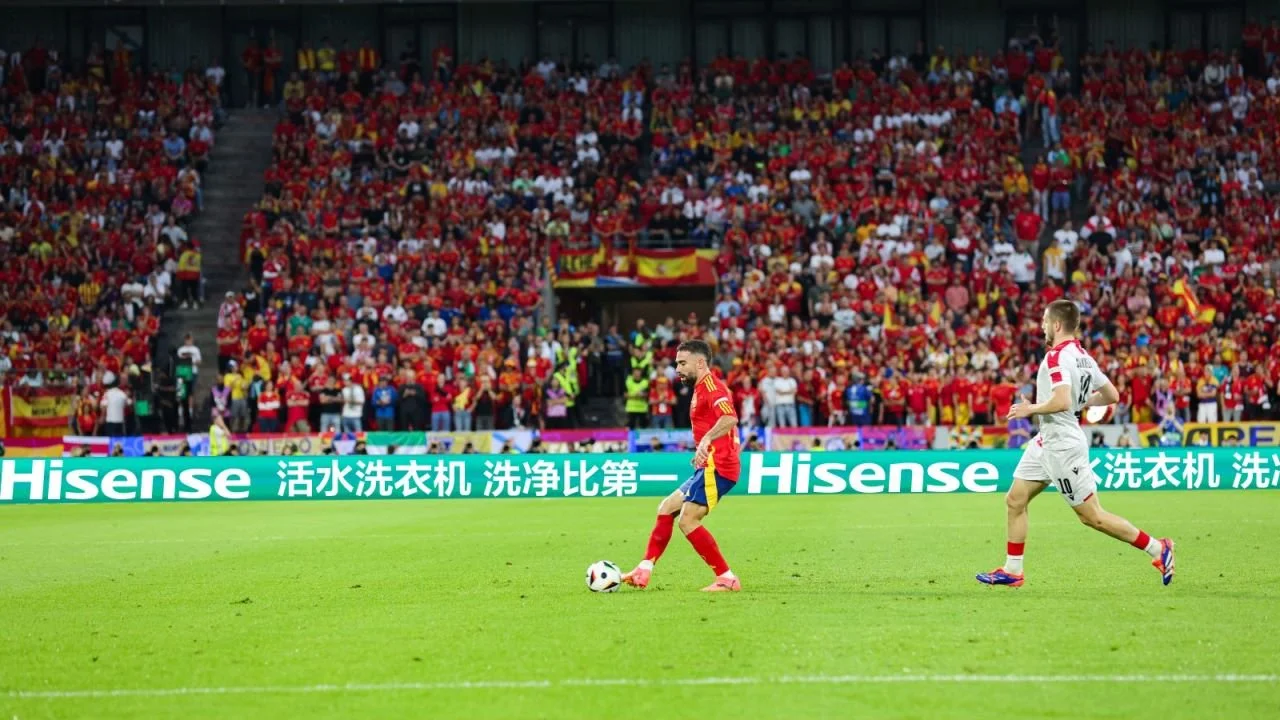Longchamp’s quiet confidence: how a French makes luxury feel personal, not exclusive

While most global luxury brands struggled to maintain momentum in 2024, French accessible-luxury brand Longchamp bucked the trend — posting a 20% increase in global sales across all regions and channels. That’s no small feat in a year marked by consumer caution, shifting values, and cooling demand for high-ticket items.
Longchamp’s resilience is not the result of splashy campaigns or celebrity-driven hype. Instead, it’s the product of a consistently-applied strategy: a focus on practical elegance, immersive experiences, and product-first storytelling. In doing so, Longchamp has carved out a rare position for itself - a luxury brand that grows not by chasing noise, but by cultivating relevance.
A Brand That Builds Around the Product
At the core of Longchamp’s strategy is a belief in the enduring value of practical, durable, and stylish design. Its iconic Le Pliage folding bag - lightweight, packable, and incredibly versatile - has remained a bestseller for decades. And crucially, it isn’t seen as disposable or trend-driven. On platforms like Xiaohongshu, consumers embrace the bag for DIY customizations, adding accessories, painting over handles, or repurposing it as a blank canvas for creative expression. It’s not just a bag; it’s a lifestyle companion that adapts to its owner.
This is no accident. Longchamp’s CEO Jean Cassegrain has been vocal about the brand’s long-term vision: to create products that people can use again and again - and still love. It’s a quiet stance in a world of fast fashion and constant drops. But it works.

From the Garden to the Runway — Immersive, Seasonal Experiences
Rather than relying on traditional fashion shows or static product launches, Longchamp brings its collections to life through immersive seasonal activations. The most recent example? A whimsical “Longchamp Vegetable Garden” in Shanghai’s Zhongshan Park.
Timed with the release of the Spring/Summer 2025 collection themed “Live Green!” the brand transformed a greenhouse into a lush French-style vegetable garden. Visitors could take playful “vegetable personality” quizzes to learn if they were a “Cyber Spinach”, “Radish Sweetheart”, or another profile. They won game tokens through activities like the ring toss, and redeem them for real produce or themed drinks. The brand even collaborated with celebrity chefs and food influencers to create dishes inspired by the colour palette of the collection - from beet-dyed handbags to artichoke motifs.
The goal wasn’t just entertainment, it was to bring the design inspirations behind the new line to life in a way that was sensory, social, and shareable. While product displays were subtle, the entire space was a three-dimensional extension of the brand’s seasonal mood board, making the collection feel tangible and relevant without overt selling.

Making Luxury Feel Personal, Not Exclusive
Longchamp’s approach sits comfortably between heritage luxury and contemporary accessibility. While it holds true to its French roots in aesthetics, craftsmanship and understated charm, it doesn’t insist on exclusivity. Instead, it embraces participation, personalisation and play.
From past activations like the “Longchamp University” (launching a back-to-school themed collection) to “urban glamping” parties for outdoor lines, each campaign invites people into a curated world that reflects the products, rather than just promoting them.
This approach resonates particularly well in China, where younger consumers increasingly value experience, identity, and emotional connection over logo-driven status. It’s no surprise that Longchamp has developed a loyal following here, one that sees the brand not as a statement of wealth, but of taste, versatility, and creative freedom.
The Power of Staying Consistent - and Curious
In an industry that often prioritises novelty and noise, Longchamp’s success in 2024 is a reminder that consistency, creativity, and curiosity can go a long way. By focusing on what it does best - timeless products, grounded in real-life needs - and layering on engaging, human-centred storytelling, the brand continues to thrive where others falter.
As luxury enters a new era, Longchamp may not be the loudest in the room, but it’s certainly one of the smartest.
A concise yet holistic summary of March 2025’s key marketing developments in China, highlighting valuable insights and their implications for brands.
Instead of chasing scale through aggressive franchising or racing to the bottom with price wars, Honeymoon and Ah-Ma Handmade are playing the long game: building brands rooted in culture, craftsmanship, and emotional connection
Luxury brands such as Burberry, Gucci, and Armani are selling heavily-reduced products at bulk warehouse Sam's Club - what does it mean for the brands?
Longchamp grew 20% last year while other luxury brands struggled. It did so by building its brand around its products, and by building immersive, seasonal experiences
POPMART's Labubu's popup in London's Harrod's is symbolic of increasingly global Chinese brands, and the plenty of lessons that come from them
With local competitors mastering manufacturing efficiency and aggressive pricing, foreign brands have wrestled with the challenge to remain relevant without succumbing to the price war. Heytea provides some valuable lessons for maintaining premium positioning
The record-breaking triumph of Ne Zha 2 confirms that compelling storytelling, rooted in Chinese culture and reflective of current societal sentiment, can profoundly influence consumer behaviour.
A concise yet holistic summary of January 2025’s key marketing developments in China, highlighting valuable insights and their implications for brands.
Conversations are likely to be a little different for many young Chinese returning home for their Chinese New Year holiday
A Harper’s Bazaar campaign featuring hotpot CEOs is a testament to the power of blending fashion, culture, and business leadership. It not only redefines the role of CEOs in branding but also highlights broader trends in cultural revival, emotional connection, and experiential marketing.
AI has become an integrated tool for marketing in China 2025, making marketing easier at a surface level, but harder than it has ever been before. How do brands utilise AI to stand out?
A concise summary of last month's key marketing developments in China, highlighting valuable insights and their implications for brands.
A concise summary of last month's key marketing developments in China, highlighting valuable insights and their implications for brands.
With every major app in China integrating social, e-commerce, entertainment, livestreaming, and video into their suite, what sets RED apart as a marketing channel for brands?
China’s most famous vlogger is back after 3 years! What does her popularity say about Chinese culture?
MINISO has launched MINISO LAND, attracting massive crowds. Its first global “IP theme park-style” flagship blends globally- known IPs into an immersive shopping experience.
Social media feeds increasing filled with “rough life” posts, alongside the popularity of more authentic retail spaces are just two examples of how Chinese consumers are seeking more real, less polished marketing
Moncler invested $28 million in the one-day "The City of Genius" event in Shanghai, blending global vision with local creative culture. For foreign luxury brands, the Chinese market remains unparalleled, and Moncler’s showcase sets a powerful example of how to captivate and inspire younger Chinese consumers.
Jellycat CAFÉ has taken Shanghai by storm with its limited-time pop-up. Exclusive plush toys and immersive packaging performances highlight Jellycat's unique blend of emotional value and playful creativity.
Founded in 2017, M Stand has continually evolved with its unique aesthetic and comprehensive innovations, positioning itself as more of a lifestyle brand than a coffee chain.
Luxury consumer behaviour in China is returning to pre-pandemic traits.
Wukong is a huge deal in China, not just being the first AAA game and record sales and players, but for its wider impacts on consumer behaviour and branding opportunities
Founded in 2019, Tiaohai Village (跳海酒馆) is a community-driven pub brand. Despite having around 30 locations nationwide, it's said to have achieved over ¥100 million ($14m) in revenue in 2023, together with over 200 highly active online alcohol communities. Check it out to learn about what sets Tiaohai apart from other pubs and how it truly connects with Chinese young people emotionally.
As Chinese Valentine's Day, Qixi Festival (七夕节) conveys Chinese-style unique romance between lovers and couples. Check it out to see how brands are embracing this traditional festival in creative ways.
Despite the Paris Olympics getting mixed reviews in China so far, the opportunities for brands to align with sports to connect with consumers is large, and growing
At Euro Cup 2024, Chinese brands accounted for five of the 13 top-tier brands, more than any other country. The success of BYD’s sponsorship has been slightly dampened by an adult toy site in the host country of Germany
More and more Chinese youth are showing their personality by pairing their bags with cute bag hangings.
This year’s Dragon Boat Festival has seen zongzi makers, consumers, brand gifts and AI-folk all innovate new and special zongzi
Mother’s Day ads showed how socially attuned brands are to mums, with some great campaigns but also some woefully inappropriate
Zhou Guanyu, China’s first ever F1 driver is a valuable commodity for brands in China, including lululemon, McDonald’s, Puma, Dior, Hennessy and HSBC





























